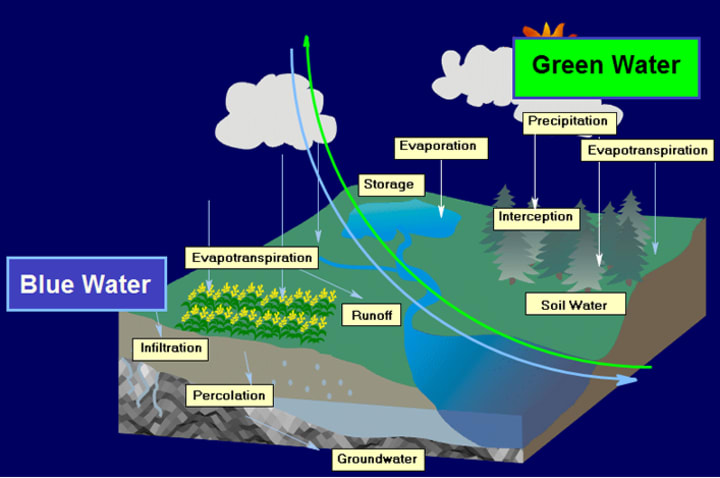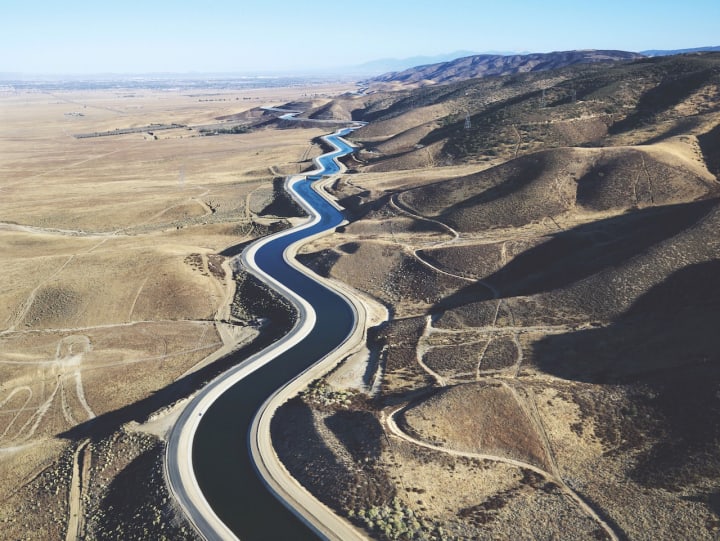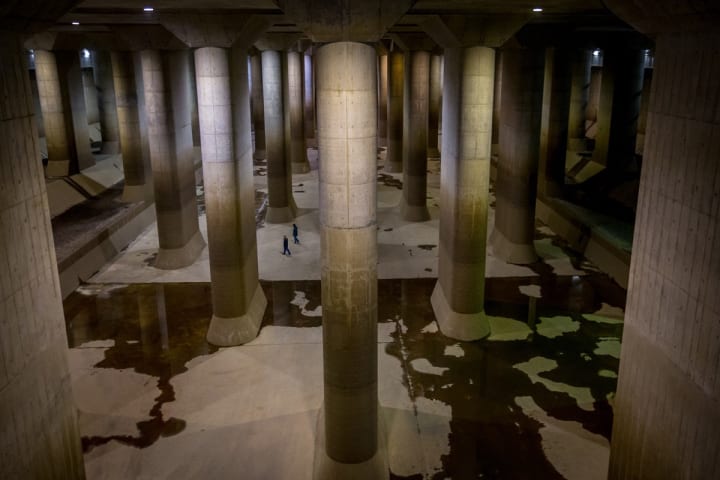Why Is Water Vanishing Worldwide?
Even as climate change is boosting rainfall, water supplies are waning globally. The culprit? Drying of soils, say researchers.

GLOBAL STUDIES are finding a paradox: water supplies in rivers, lakes and catchment areas are declining at the same time as climate change is generating more extreme rainfall. Why?
The culprit is the drying of soils, say researchers, who suggest the world is quickly headed for a future where drought-like conditions will become the new normal in many parts of the world, especially in those regions that are already dry.
The studies — relying on the most exhaustive global analysis of rainfall and rivers — were conducted by a team led by Prof. Ashish Sharma at Australia’s University of New South Wales (UNSW) in Sydney. They relied not on model simulations, but on actual data from 43,000 rainfall stations and 5,300 river monitoring sites in 160 countries.
Large rivers drying out
“This is something that has been missed,” said Sharma, from UNSW’s School of Civil and Environmental Engineering, whose most recent paper appeared in Water Resources Research, a journal of the American Geophysical Union.
“We expected rainfall to increase, since warmer air stores more moisture — and that is what climate models predicted too. What we did not expect is that, despite all the extra rain everywhere in the world, the large rivers are drying out.
“We believe the cause is the drying of soils in our catchments. Where once these were moist before a storm event — allowing excess rainfall to run off into rivers — they are now drier and soak up more of the rain, so less water makes it as flow.
“Less water into our rivers means less water for cities and farms. And drier soils means farmers need more water to grow the same crops. Worse, this pattern is repeated all over the world, assuming serious proportions in places that were already dry. It is extremely concerning,” he added.
‘Blue water’ vs ‘green water’
The amount of rainfall that enters lakes, rivers and underground aquifers is known as ‘blue water’ — the type we humans use every day for domestic, industrial and irrigation purposes. At best, only 36% of all water in the hydrological cycle is blue water. The remaining 64% is ‘green water’: rainfall that is either captured by vegetation, or seeps into the soil and is later extracted by plants and evaporated back into the atmosphere.
As global warming drives the Earth’s mean temperatures higher, more water is evaporated from soils, forcing drying soils to absorb more of the rainfall when it does occur — and thereby leaving less ‘blue water’ for human use.

“It’s a double whammy,” said Sharma. “Less water is ending up where we can store it for later use. At the same time, more rain is overwhelming drainage infrastructure in towns and cities, leading to more urban flooding.”
The findings were made over the past four years, in a body of research that began with a paper in Nature Geoscience in June 2015 based only on Australian data, another in Geophysical Research Letters in April 2016 that showed how rainfall and storms worldwide were changing behaviour due to climate change, and a third in Scientific Reports in August 2017 that found the same effects in water supplies globally.
In the most recent paper, in Water Resources Research in November 2018 — which has since been cited by researchers in the U.S., India, Switzerland and the U.K. — Sharma and colleagues write that despite a widespread rise in rainfall extremes seen around the world, there’s no evidence of an increase in flooding.
In fact, the evidence points to decreased flood peaks for those natural, moderate floods that are essential for refilling water supplies in reservoirs. “On the whole, flood magnitudes are decreasing,” write Sharma and his co-authors, Dr. Conrad Wasko of the University of Melbourne and Prof. Dennis Lettenmaier of the University of California, Los Angeles.
In an interview, Sharma added: “While extreme floods may increase due to the larger storms that are occurring, these floods are often too large to be stored for water supply. It is the less extreme floods our reservoirs depend on.”
Large declines in soil moisture
They argue that two largely unexpected effects of climate change — large declines in the amount of moisture in the soil, and the contraction in the geographical spread of each storm event — are the major reasons why increases in extreme rainfall are not resulting in corresponding increases in flooding.

They point to previous U.S. research that shows that, in extreme rainfall events, if surrounding soils are wet before a storm, 62% of the rain leads to flooding that is retained by catchments. But when soils are dry, only 13% of the rain results in flooding.
“This is kind of contradicting the increasing flood argument in past IPCC [Intergovernmental Panel on Climate Change] reports, but pointing to possibly a far worse scenario,” said Sharma. “Small floods are very important for water supply, because they refill dams and form the basis of our water supply.
“But they’re happening less often, because the soils are sucking up the extra rain. Even when a major storm dumps a lot of rain, the soils are so dry they absorb more water than before, and less reaches the rivers and reservoirs.”
Past research has so far missed this, Sharma added. “Everybody has been obsessed by the flood side of the equation but have ignored the more critical component, which is the embattled water supply that comes from reduced flows into our reservoirs.”
Raghu Murtugudde, a professor Atmospheric and Oceanic Science and Earth System Science at the University of Maryland, agreed. “Clearly, soil moisture heavily influences flood response to extreme rainfall,” he wrote in an opinion piece in India’s The Hindu, commenting on the research. Climate change is creating a multitude of interactions, he added, that “point to the urgent need for a better understanding of the complexity of the relation between extreme precipitation, streamflows and floods.”
Booming demand, shrinking supply
If water available for human agriculture and industry is already declining as a result of climate change, how will it fare in the years ahead? In 2019, carbon dioxide (CO₂) concentrations in the atmosphere hit a peak of 415.26 parts per million — a level not seen for more than three million years, when global sea levels were several metres higher and parts of Antarctica blanketed in forest.

And those emissions are growing at unprecedented rate, according to Pieter Tans, a lead scientist at the U.S. National Oceanic and Atmospheric Administration’s Global Greenhouse Gas Reference Network in Boulder, Colorado. There have now been five consecutive years of carbon dioxide increases of at least 2 parts per million. “The rate of CO₂ growth over the last decade is 100 to 200 times faster than what the Earth experienced during the transition from the last ice age. This is a real shock to the atmosphere,” he told Scientific American.
What’s worse, greenhouse gas emissions are projected to increase by another 50% by 2050, as world population rises from 7 billion today to over 9 billion. As a result, total global water demand is projected to increase by about 55% due to manufacturing (+400%), electricity generation (+140%) and domestic use (+130%). “In the face of these competing demands, there will be little scope for expanding irrigation water use [for agriculture] under this scenario,” argues the Paris-based Organisation for Economic Co-operation and Development in its OECD Environmental Outlook to 2050 report.
So what is the solution? Sharma is pessimistic about collective action having an impact on emissions fast enough, and thinks we need to start preparing for the implications now: “One option is to wait for international agreements to take effect, so greenhouse gas concentrations can be reined in — but this will take a long time. The other option is to be proactive, and re-engineer our water systems so we can better adapt and cope.”
To adapt to this new reality, he and a number of water experts believe new policies and infrastructure is needed urgently. In areas where water supply is shrinking, water-intensive farming will need to be curtailed or moved to where rainfall is predicted to increase, while reservoir storage capacities will need to be expanded. In urban areas, where flooding is becoming more common, incentives to create ‘green cities’ and to store or divert flood water will need to be explored.
Re-engineering on a massive scale
“We need to adapt to this emerging reality,” said Sharma. “We’re going to need re-engineering on a massive scale in some places if we are to continue living in them. But it’s possible: places like Arizona and California receive barely 400mm of rain each year, but have engineered their water supply systems to make previously uninhabitable places liveable.

“Or take the Snowy Mountain Scheme [in Australia]: it’s not just about hydroelectricity, it’s also a complex water supply scheme with 225km of tunnels, pipelines and aqueducts.”
Sharma said the answer was not just more dams. “Re-engineering solutions are not simple, they have to be analysed on a region-by-region basis, looking at the costs and the benefits, looking at the change expected into the future, while also studying past projects so mistakes are not repeated.
“There are no silver bullets. Any large-scale re-engineering project will require significant investment, but the cost of inaction could be monstrous,” he added.
In urban areas, the reverse will be needed: flooding is becoming more common and more intense. Global economic losses from flooding have risen from an average of US$500 million a year in the 1980s to around US$20 billion annually by 2010; by 2013, this rose to more than US$50 billion. The Intergovernmental Panel on Climate Change expects this to more than double in the next 20 years as extreme storms and rainfall intensify and growing numbers of people move into urban centres.
Adapting to this is possible, says Sharma. “Tokyo used to get clobbered by floods every year, but they built a massive underground tank beneath the city that stores the floodwater, and releases it later. You never see floods there now.”

Prof. Mark Hoffman, UNSW’s former Dean of Engineering, called for a global conversation about how to deal with the unfolding scenario of coming water shortages, especially in Australia, which is already the driest inhabited continent (apart from Antarctica).
“It’s clear there’s no simple fix, so we need to start preparing for this,” he said. “Climate change keeps delivering us unpleasant surprises. Nevertheless, as engineers, our role is to identify the problem and develop solutions. Knowing the problem is often half the battle.”
Like this story? Please click the ♥︎ below, or send me a tip. And thanks 😊
About the Creator
Wilson da Silva
Wilson da Silva is a science journalist in Sydney | www.wilsondasilva.com | https://bit.ly/3kIF1SO






Comments
There are no comments for this story
Be the first to respond and start the conversation.